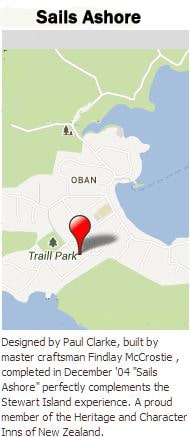Cabbage Tree Flowering
There is a long held belief in New Zealand that when the Cabbage Tree flowers heavily then we should expect a long hot dry summer. If so then the extra water tank we installed may have been a very good idea. see post
Cabbage Tree Cordyline australis
Certainly this year the Cabbage Trees are spectacular, perhaps the best I have seen for many years.
The dozens of specimens around the village are all heavily in bloom
The blooms appear in very large clumps made up of long racemes of delicate white blossom, and are highly scented. I took a clump that had blown off into Iris, maybe to place in our guest sun room. But 10 minutes later we both decided that it was just too overpowering in a room and sadly it had to be evicted.
Garden varieties
Cordyline species are popular in gardens and we have a small C. indivsa in our own garden and there are several C. banksii about the village and on roadsides
Summer is Officially Here
And for once the Weather Gods are agreeing, with kayakers enjoying the high (for us) temperatures and calm sunny days.
The Trials of a Photographer
A source of quiet amusement for me are some of the photographers I take to Ulva. Long Lens are probably the biggest source of photographer frustration.
Although wonderful for open country, and reasonable static subjects, our dense forest and generally very mobile birds makes for serious frustration … the *$#@!! birds are too close ….. or …. by the time I’ve found the bird in my lens it’s flown away.
The other issue is tripods. I remember once taking a very enthusiastic (foreign) amateur over for a 6 hour film and photography walk. Central … from my point of view anyway as I ended up carrying the darned thing…. was a whacking great tripod that weighed a ton. And I was told I didn’t have a clue when I suggested that light weight & flexibility was needed as by the time he got it that kit set up the subject in question would be three ridges away. And though I actually carried it all semi set up, even then by the time he got it actually organised the bird was long gone. He didn’t manage a single worthwhile shot, even though the birds were far better than normal. From memory we saw 14 or 15 of the 18 land species resident…….And he had stabilised lens.
So what do I use
My long lens is a 70/300mm, not as fast as I would like, but relatively light weight and not nearly as cumbersome as the faster models , and so easier to hold. And I use the fastest cards I can buy together with high speed burst mode, which with a digital camera means hopefully one shot out of a sequence will be worthwhile.
Our New Family Member
Occasionally I am faced with the situation of young birds which will not survive either because of inability of parents to care for them, or of an external danger to the nest.
Black Oystercatcher nest, with a third “insurance” egg. The third egg chick will never survive, as it is always at least 5 days younger, and therefore less able to compete, and in any case the parents are just not capable of feeding 3 hungry youngsters. And I think Oystercatchers are delightful birds
My natural inclination is to bring them home and attempt to rear them. However the thought of Iris’s reaction is a significant brake on precipitous action. And also, how on earth do I teach a baby oystercatcher to be an oystercatcher
And last year 4 parakeet nestlings drowned in a heavy rain event which I should have foreseen Link to Post .
But, as I said Iris would really create if I did bring a young Oystercatcher, or a clutch of parakeet home to raise.
So you can imagine my surprise a week ago when she turned up with a baby thrush. It had obviously fallen out of it’s nest. but was otherwise unharmed. It took to hand feeding immediately and seems quite happy in its cage. Initially we fed it moist cat food, but now we are feeding it slugs which Iris catches under “slug boards” in the vegetable garden … better than chemical control by far …. and it loves the worms we find in our compost bins. And I downloaded thrush song and we play this while feeding it and on and off during the day. But can it eat !!!!!, and every 20 minutes or so. I really feel sorry for thrush parents with several in the nest all demanding food.
But what I’m really looking forward to is seeing Iris on her hands and knees prodding the lawn with her nose as she teaches it to find it’s own dinner, and running around flapping her arms during flight training.
On a more serious note it will graduate into our glasshouse when it has some idea of self feeding …. lots of worms there, and scope to practice flight skills. Then we hope to release it into the wild with the other thrushes as soon as it can fend for itself.
…. Peter & Iris, Sails Ashore
11 View St,
Stewart Island,
[email protected]
www.sailsashore.co.nz
64 3 219 1151
0800 783 9278

